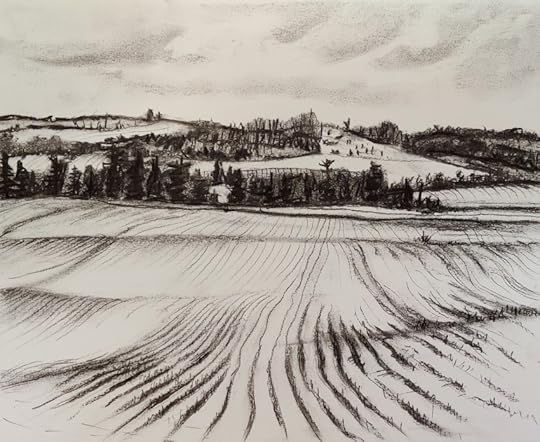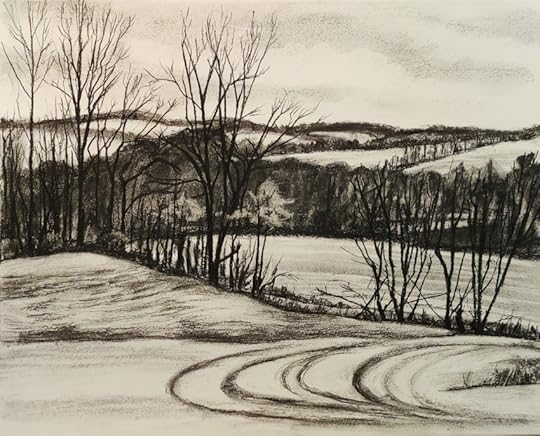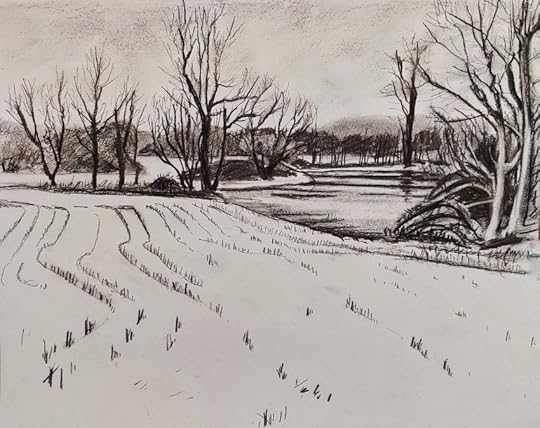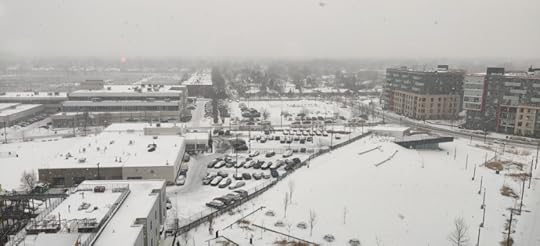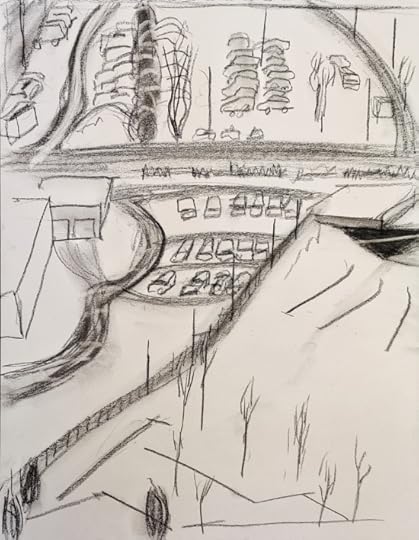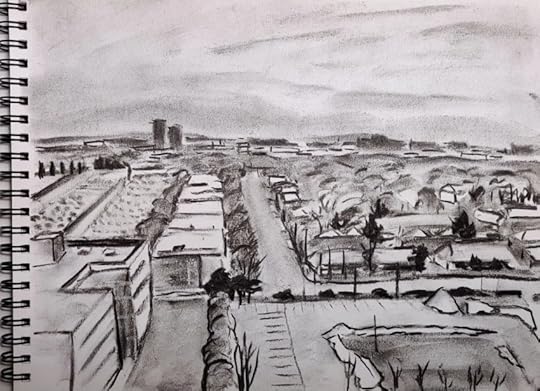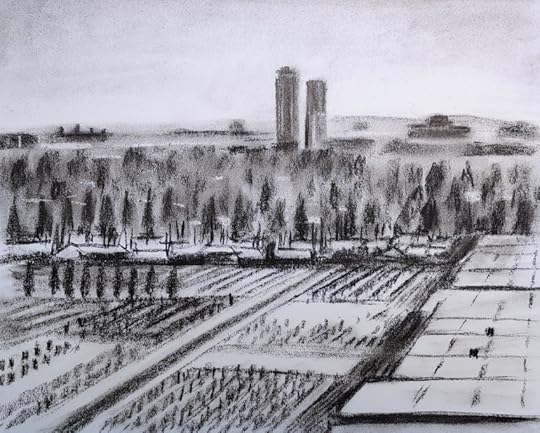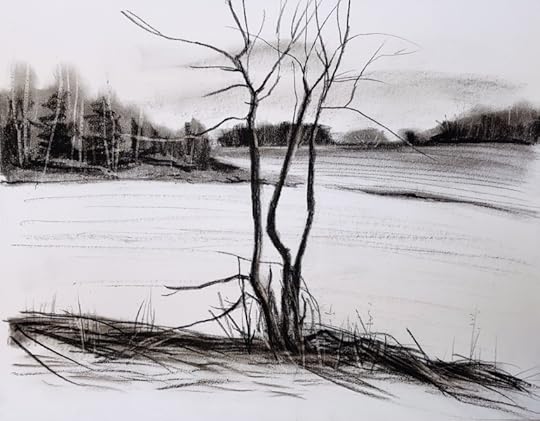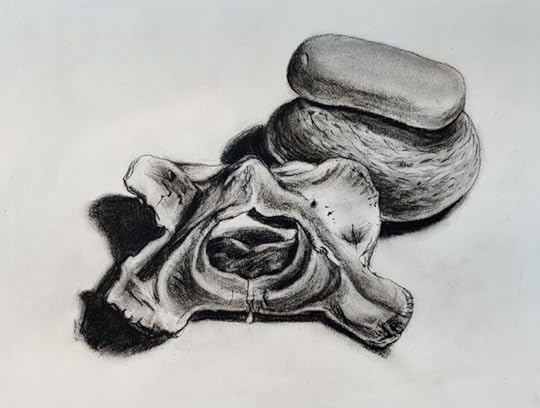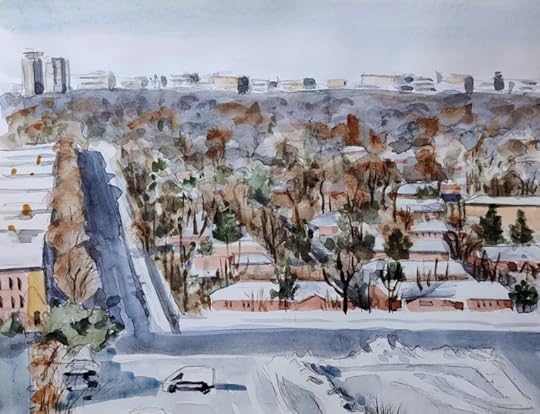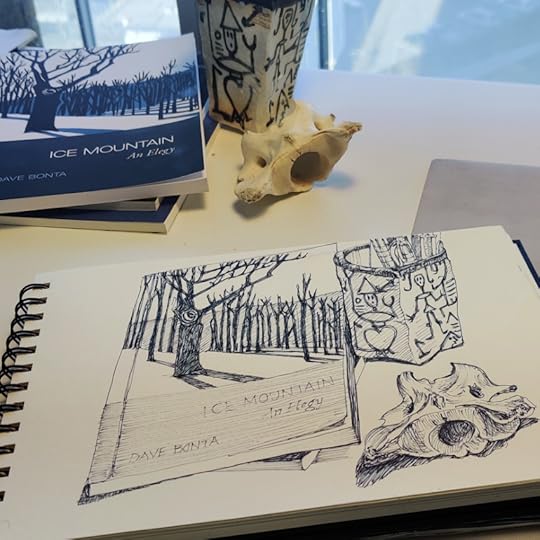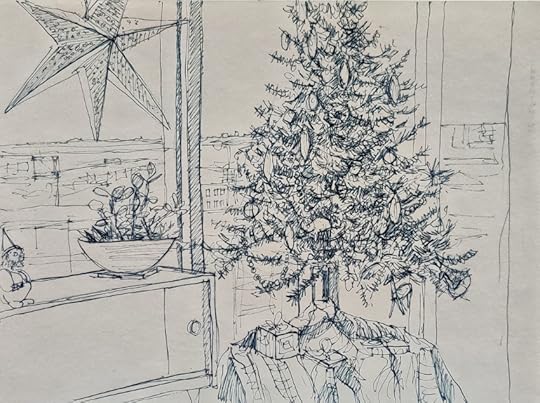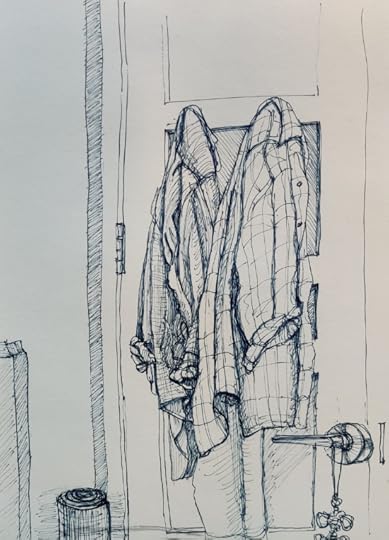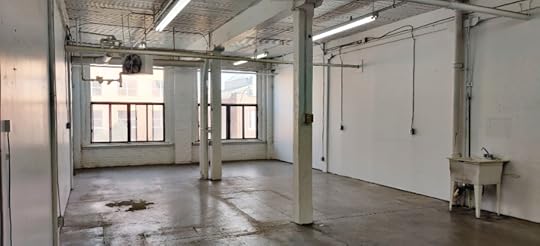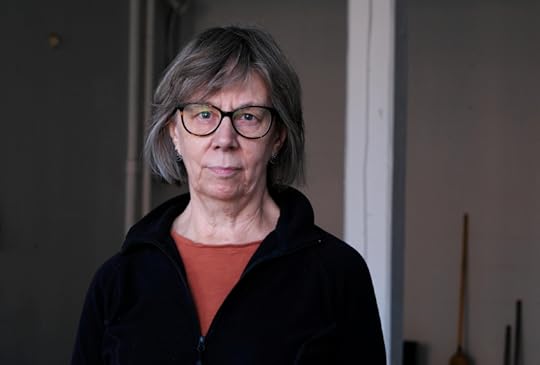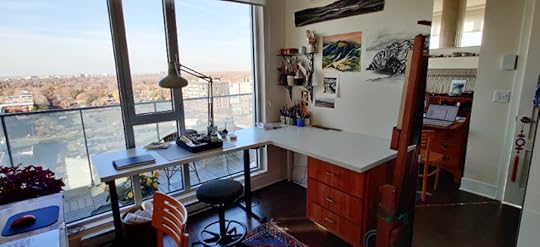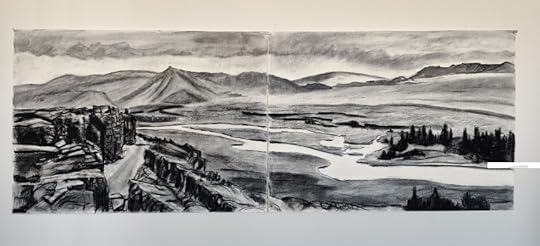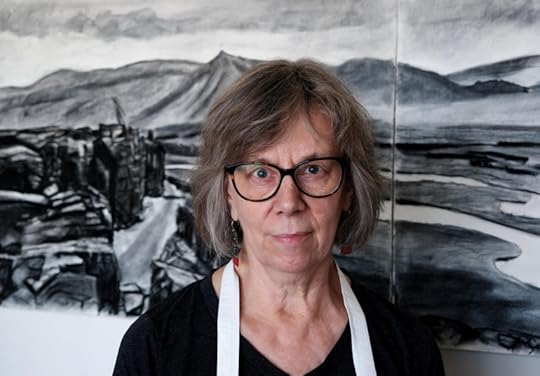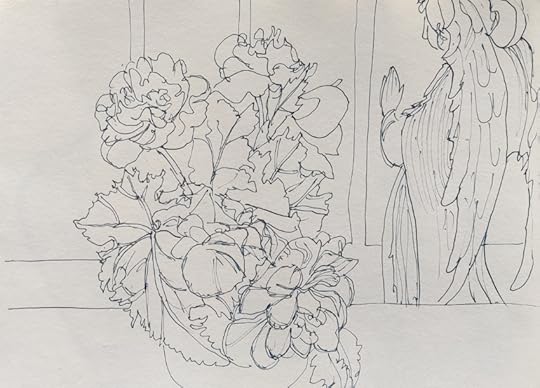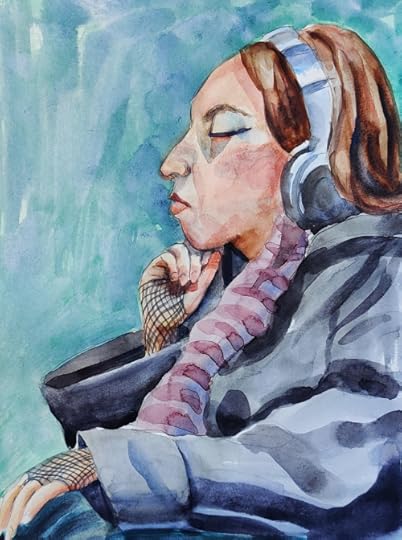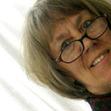Elizabeth Adams's Blog, page 11
February 15, 2023
Aleppo
"Go to Aleppo!" my father-in-law exhorted us, on many occasions. It was his favorite among all the ancient cities, and he wanted us to see its beauty, which he described to us in detail, eyes closed, rhapsodizing. He and his two sons had gone to Damascus in 2000: a nostalgic final trip for the 90-year-old father and a bonding and learning journey for the sons, the elder of whom had been born there. My husband, the younger son by 11 years, came home and immediately wanted to us plan a trip to go back together, to both Damascus and Aleppo. And we did just that, sending our passports to the Syrian embassy for the requisite visas. But shortly before we were supposed to leave, the political situation became very unstable, and we decided -- most unfortunately, in hindsight -- to postpone. As we all know, our entire world, and the Middle East in particular, changed irreparably after that, so we never made it to the city Mounir had loved and which no longer exists; what he remembered will never be seen again.
Back in 2016, Charles Wilkins, a professor at Wake Forest University, was interviewed about Aleppo on an episode of All Things Considered. He spoke of how Aleppo, one of the longest continually-inhabited cities of the world, had been well-placed historically as a caravan city and meeting point of east and west, and survived many occupations and sieges over the millennia. Called "the Jewel of Syria", he described it in terms my father-in-law would have loved, before saying "I can hardly put into words my emotions in seeing this city brought to its knees in this way."
My father-in-law fortunately didn't live to know about the destruction of Aleppo in the civil war, and now that part of Syria has undergone yet another tragedy. To make matters even worse, international aid to the region, some of which is held by non-government forces, has been delayed or refused by the Assad government, which makes it hard to know if contributions of money are even getting through.
I have nothing wise to say about any of this, just that I am sick at heart about this degree of suffering, and felt the need to put that into words here, for the sake of my family, the people I know who care about this region, and all those I don't know who are still there. Someone commented, after seeing the pictures of the earthquake devastation and the death toll figures, "There is no God," and I understand their reaction. Why this should happen, to people who have already suffered so much, defies comprehension, not just faith, if one is supposed to have faith in an intervening deity. However, there is one truth that believers and non-believers ought to be able to agree on, which is that human beings can either love one another or not; when we do, we are able to help one another in the midst of great tragedy, and when we don't, we not only create but compound enormous suffering.
February 10, 2023
On the question of teaching art...
For best results, watch full-screen.
For a long time, both here (quietly, in some comments) and in my head and heart, the question has come up as to whether, during the next part of my life, I might do some teaching. What I'm most interested in are the people who, for whatever reason, loved to draw and paint when they were younger, and then gave it up. Far too often that was because of a teacher making disparaging remarks, or it may be because life -- and other paths and responsibilities -- simply intervened. But now, later in life, the call to do that once-loved creative activity is resurfacing. How to begin? How to get over those nagging insecurities -- that voice in the head that says "you aren't any good" or "it's too late?" -- and enjoy the process, have fun, and stay with it?
I'm also interested in drawing and other forms of art as a meditative practice, which involves setting aside one's internal judging voice, and learning to become immersed in the act of creating for its own sake, and for the good it does to our spirits. In both of these areas, then, there's a psychological aspect which is often missing in traditional instruction but which actually forms a stumbling block for all creative pursuits and must be overcome, not just once, but repeatedly. However, once we understand it, it gets easier.
The possibilities for art instruction have changed so much in my lifetime -- when I was young there were correspondence courses for would-be cartoonists or illustrators, but anyone serious about fine art went to "art school". Personally, I'm glad I didn't, because I never got slotted into a particular style or type of work, and so I've remained quite open to all types of art and ways of approaching it. Now there are so many ways for people to learn, and to teach: from online courses to in-person workshops to one-on-one live zoom classes.
I have a lot of work to do, myself, to figure out what I might want to do and how to do it. This past week I made a narrated video of myself making a charcoal drawing, in order to observe my own process and make myself talk about it. Of course, this isn't a "beginner" video, and as such it doesn't fit into either of the categories I've mentioned above. But I learned a lot of technical things doing it, and it suggests other subjects that might be addressed in a series of videos -- like a deeper look at materials, for instance. I thought you might be interested in seeing it.
Any comments you may have are welcome! Next time, I'll try to set the camera up so that it's more over my shoulder, and the work is parallel to the camera frame -- no need for the viewers to get a stiff neck! It feels to me like introductory videos should be short, from 5-8 minutes perhaps, while a demo like this -- which shows an hour-long process condensed to 16 minutes -- can't really be much shorter. If you get bored at any point, you can skip forward!
Thanks for watching, and for any thoughts you may have.
January 30, 2023
Snowy Fields of Central New York
I made a video about some charcoal drawings done during a recent visit to central New York, when the landscape that I love was covered with new snow, in all of its graphic beauty. For the best experience, please view the video at full screen size (after pressing the "play" arrow, click the little square at the bottom right of the video screen.)
Please let me know if you like this sort of thing and would like to see more! I'm planning to do another that explains the materials in more detail, and some that show drawings in the actual process of being made.
Below are the finished drawings shown in the video. Enjoy! It was such a pleasure to make them, and I'm looking forward to doing more.
January 12, 2023
Working in Monochrome
When the view from your studio window is this monochromatic, sometimes it's best to take advantage of nature's prompt to interpret things in black-and-white. That's what I was thinking when I bought a new Fabriano sketchbook last week with the intention of using it for charcoal drawings. Maybe some dry pastel and oil pastel, too, but mostly black-and-white work, in a large format. I've been drawing in it almost every day since then.
In this fast sketch of the little park below us and the parking lots beyond, I was just trying to see the various geometric shapes and make a lively drawing. I'll be doing more like this as I figure out how to use the essentially boring view in a more graphic composition. What really interests me are the tire tracks in the snow. Along with the little trees and bushes, these are the only organic, irregular shapes in the scene and they bring something otherwise static to life.
This one, of the neighborhood beyond the parking lots, also appeared in the previous post, and is the view I was drawn to initially and have depicted a number of times, mostly in watercolor.
View of the Jewish cemetery in snow. Charcoal on paper, 11"x14".
I've been wanting to draw the Jewish cemetery, over on the left, but hadn't felt ready until I saw it covered with snow, on a foggy day, with the ethereal trees behind it. Charcoal lends itself perfectly to a scene like this.
We went out into the countryside to make a quick trip across the border two days ago. This is a snow-covered field near St-Jacques-le-Mineur, Quebec, and was completed very quickly. The effect of trees in the distance is just vine charcoal smudged with my finger, with some harder, dark Conte crayon applied over it. The birches are picked out with a fine-pointed white eraser.
The very first drawing in the sketchbook was of this vertebra and two rocks. It also combines soft vine charcoal for the midtones with some harder compressed charcoal and Conté crayon, and a few details in charcoal pencil. White erasers in different sizes and shapes are indispensable tools for charcoal work - they allow you to erase large areas, for sure, but also to go backwards and forwards, working with both the charcoal and the eraser. The main use is to lighten areas or pick out highlights and create texture. And you must work on good paper that has some "tooth" to catch all the little particles of charcoal, but will stand up to scrubbing and both the buildup of dark areas and the erasure of others. I usually work on Canson or Fabriano sheets of pastel/charcoal paper, but I really wanted a sketchbook right now because storing a lot of small drawings is a problem for me in the new space, and I knew this format would encourage me to do daily drawings. The sketchbook I'm using is a 100-sheet wire-bound book in the Fabriano 1264 line, in the series labeled "Sketch," and except for wishing the paper were just a little heavier, I'm quite happy with it.
And don't worry, color hasn't disappeared!
January 6, 2023
New Year in a New Neighborhood
New snow. Watercolor with pencil, in Stillman&Birn sketchbook, 9" x 6", 12/29/22
The Christmas storm blanketed Montreal with a thick, wet coat of snow, and then freezing rain fell on top of it. On the 27th, we went out into the countryside to a friend's house, where there had been no rain, and even more snow -- several feet of it -- lay pristinely on the ground and the rooftops. Not so here in the city, where by New Year's nearly all the snow was gone.
Until last night that is, when it snowed again. The weather has been unremittingly grey, but I've enjoyed the changing moods outside my studio window. There's really nothing very exciting to draw, on the surface of things -- a little park, a car dealer close by, an empty parking lot, a street heading off into the suburban rooftops of TMR (Town of Mont-Royal) with lots of trees, and beyond them, the distant buildings of northern Montreal past rue Sauve. On clear days we can see the foothills of the Laurentians. None of this is worth a painting on its own strength, but what interests me is how the weather affects the scene, how every day is actually as different as the moods of the sea, how the changing light and atmospheric conditions alter the emotional temperature of what I see -- and feel. Trying to capture some of that is a worthy sketchbook challenge.
The painting at the top was a difficult one and I struggled to pull something out of it after getting very discouraged with the page about halfway through, and not wanting to overwork the watercolor. Adding some sketchy, loose details in dark brown helped a lot, as did increasing the contrast overall by deepening the shadows.
Melting snow. Charcoal in Fabriano sketchbook, 14" x 11".
I bought a new, large sketchbook this week specifically for charcoal drawings and pastel sketches, such as the image above.
While I often drew or painted the park across the street from our old place, and documented the seasons, it never seemed to change so much day-to-day and therefore wasn't as interesting to me, even though it was vastly more "beautiful." Probably if I'd had a higher vantage point it would have been different, because here the sky takes up more than half of my view, and the condition of that sky says everything about how the land and city look below it.
Snowy day. Direct watercolor in sketchbook, 9" x 6".
Right now it's starting to snow again, so the scene is even whiter and more ethereal than in this watercolor sketch, completed only an hour ago. Color fades to the barest hint of itself; the indistinct horizon blurs even more and comes closer; trees and rooftops lose their sharp edges.
Today's view feels chalky, and I'm looking forward to trying to capture it in pastels, but in a little while the sun will have gone down, so that may have to wait until tomorrow -- when who knows what the sun and sky will be doing?
December 29, 2022
Book List, 2022
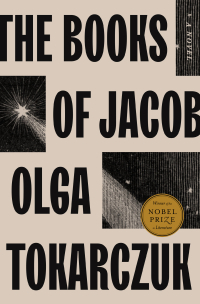 The list of books I read in the past year is the shortest in memory, partly because of all the things that happened this year to disrupt my reading time, but also because it contains three very long titles. Most of my reading was connected with my zoom book group, and we began the year reading Tolstoy's War and Peace. That occupied us during most of the cold months last winter, appropriately enough. It was my third time through, and I feel like I got even more out of it, especially by virtue of the close reading with astute friends. Among us, we read several different translations, and this also added to the depth of our discussions. I was the one who had pushed us to read it, and so it was a delight to watch the group engage with and, at length, fall in love with the book and its characters, and appreciate Tolstoy's tremendous gifts as a novelist. The biggest gratification for all of us came at the end when several members who had been reluctant at first, or who had tried previously and never gotten through it, expressed their feeling of accomplishment and happiness at having met this monument of literature, which everybody agreed really does deserve its rating as one of the greatest novels of all time.
The list of books I read in the past year is the shortest in memory, partly because of all the things that happened this year to disrupt my reading time, but also because it contains three very long titles. Most of my reading was connected with my zoom book group, and we began the year reading Tolstoy's War and Peace. That occupied us during most of the cold months last winter, appropriately enough. It was my third time through, and I feel like I got even more out of it, especially by virtue of the close reading with astute friends. Among us, we read several different translations, and this also added to the depth of our discussions. I was the one who had pushed us to read it, and so it was a delight to watch the group engage with and, at length, fall in love with the book and its characters, and appreciate Tolstoy's tremendous gifts as a novelist. The biggest gratification for all of us came at the end when several members who had been reluctant at first, or who had tried previously and never gotten through it, expressed their feeling of accomplishment and happiness at having met this monument of literature, which everybody agreed really does deserve its rating as one of the greatest novels of all time.
We then drew a deep breath, and decided to read a number of short works, of which the two by César Aira stand out particularly, along with Aristophanes' comic play The Birds.
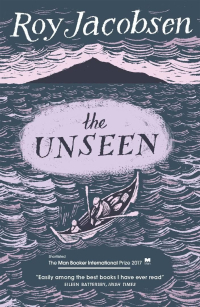 During the summer and early fall, we read the three volumes of the Barrøy Chronicles by the Norwegian author Roy Jacobsen, and I cannot recommend them highly enough; the books follow a woman, Ingrid Barrøy, from her childhood to early middle age, as she grows up and then takes responsibility for a small island off the northwestern coast of Norway; the books spans the years from the early 1920s to around 1950. What may have originally started as a descriptive narrative of the extremely difficult life of the isolated islanders and their precarious existence due to extreme weather, poverty, and unpredictability, it becomes a human story of one astonishing woman whose remote life is intruded upon by world events. There is a fourth volume coming, and we await it anxiously!
During the summer and early fall, we read the three volumes of the Barrøy Chronicles by the Norwegian author Roy Jacobsen, and I cannot recommend them highly enough; the books follow a woman, Ingrid Barrøy, from her childhood to early middle age, as she grows up and then takes responsibility for a small island off the northwestern coast of Norway; the books spans the years from the early 1920s to around 1950. What may have originally started as a descriptive narrative of the extremely difficult life of the isolated islanders and their precarious existence due to extreme weather, poverty, and unpredictability, it becomes a human story of one astonishing woman whose remote life is intruded upon by world events. There is a fourth volume coming, and we await it anxiously!
In November I read Color Creates Light, a book that presents the teachings and life of Hans Hofmann, considered by many to be the father of abstract impressionism (one of his drawings, a view of Provincetown, is below). While this is not explicitly where I expect my art to go, the book was extremely helpful and eye-opening for me, and it's one I'll be going back to frequently for inspiration and insight. Hofmann carried on from Cezanne, who had moved on from impressionism to develop a new way of depicting nature by using planes of color that solidified the forms and locked the picture plane together.
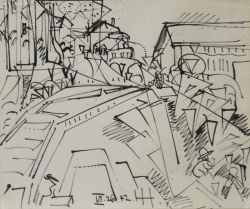 Cubism developed out of this, along with the further innovations of Picasso and Matisse, which then gave rise to what we think of as 20th century modern art. Hofmann analyzed and understood exactly what Cezanne had done, but took it into the realm of pure color and abstraction. He is considered the most influential teacher of the new generation of painters who became known as abstract impressionists. I had always been curious about this lineage and how it came about, but found the bits of Hofmann's teaching I had read quite obscure and hard to follow (others, even his students, agree -- it was partly a problem of language issues between German and English.) So this book, by a former student, clarified a great deal and opened a lot of possibilities and challenges for me in my own work.
Cubism developed out of this, along with the further innovations of Picasso and Matisse, which then gave rise to what we think of as 20th century modern art. Hofmann analyzed and understood exactly what Cezanne had done, but took it into the realm of pure color and abstraction. He is considered the most influential teacher of the new generation of painters who became known as abstract impressionists. I had always been curious about this lineage and how it came about, but found the bits of Hofmann's teaching I had read quite obscure and hard to follow (others, even his students, agree -- it was partly a problem of language issues between German and English.) So this book, by a former student, clarified a great deal and opened a lot of possibilities and challenges for me in my own work.
Finally, we've recently begun Nobel Laureate Olga Tokarchuk's massive novel, The Books of Jacob, which immerses us in the Jewish world of eastern Poland (near Ukraine) in 1750, a time and place where many cultures collided through travel, trade, and migration, and where a young man, Jacob Frank, was hailed and followed as the Messiah. It's fascinating, often bizarre, written in a somewhat fragmentary style that (like the place itself, perhaps) presents different threads and seemingly-unrelated people until they begin to come together into the story of Jacob himself. We're only about 1/3 of the way through the 900-odd pages so far, so I can't say much more than that; this remarkable book will continue to occupy us for several months.
As always, I'm anxious to hear what you've read this year, what stood out for you, what disappointed you, and what you're looking forward to reading in 2023!
2022 Book List
The Books of Jacob, Olga Tokarchuk# (in progress)
Enduring Love, Ian McEwan
Color Creates Light: Studies with Hans Hofmann, Tina Dickey
The Art and Culture of Early Greece, 1100 - 480 BC, Jeffrey M. Hurwit
The Eye of the Rigal, Roy Jacobsen (Barrøy Chronicles 3) #
White Shadow, Roy Jacobsen (Barrøy Chronicles 2)#
The Unseen, Roy Jacobsen (Barrøy Chronicles 1)#
A Time of Gifts: on Foot to Constantinople (Book 1 of a trilogy), Patrick Leigh Fermor
How I Became a Nun, Cesar Aira #
An Episode in the Life of a Landscape Painter, Cesar Aira (rereading) #
Several short stories, Borges #
The Reluctant Gaucho, Roberto Bolaño #
Babylon Revisited, F. Scott Fitzgerald
Recitatif, Toni Morrison #
The Birds, Aristophanes #
Intimacies, Katie Kitamura
Feline Philosophy, John Grey
War and Peace, Leo Tolstoy (rereading with my book group) #
The Journey to the East, Hermann Hesse
Hamnet & Judith, Maggie O'Farrell
# indicates a book read with my book group
December 22, 2022
Back to Drawing
It's been a busy time, and I haven't been able to do much artwork. But, to be honest, I haven't really wanted to either -- I just didn't have the urge or the right spirit, and then, 12 days ago, I managed to sprain my ankle quite badly. Although I was able to put weight on it, I sure couldn't do much, and it was swollen and painful, but has been gradually healing up. I had accounting and other tasks to do on the computer, and there was holiday cooking and baking, cards to write and gifts to wrap and send, all of which felt strange because of my father's absence. When I had free time, it seemed like I was spending way too much of it (true confession) looking at knitting posts on Instagram, searching obsessively for the best BB creme or light foundation for older skin, or getting drawn in by 1) cat videos or 2) holiday paper-folding craft videos, which, of course, started clogging my feed as soon as I watched a few of them. But now that the Christmas preparations are mostly over, and I feel like I'm going to be able to get through it without falling apart, I've picked up the sketchbook again, and it feels like the ice is broken. Last weekend we went to two beautiful musical events at the cathedral: a concert by our choral scholars, and the traditional Lessons & Carols service. And in the past few days I've been able to go out by myself and do some grocery shopping and other errands.
Sometimes drawing is what grounds me, but sometimes I need to feel more grounded in order to be able to draw.
So...the drawing at the top of the page is of Dave Bonta's book Ice Mountain: An Elegy that I illustrated and published a few years ago; an animal vertebra, and a ceramic cup made by my late friend Jenny Lewis.
This is the first one I've done that shows any of the interior of our new apartment, with an indication of the rooftops we see out the window. It also shows the first artificial tree we've ever had, but we couldn't see any reasonable way to get a real tree up to the 11th floor and then down again without a big hassle for us, and potential needle-mess in the hall and elevator. To our surprise, we like it!
And here's the back of my studio door, drawn during a long zoom meeting when I was able to turn off my video. There's an old blue chambray workshirt, and a grey plaid wool shirt that was my paternal grandfather's, and has been my painting shirt ever since he died around 1980. I like that they've followed me here.
How are things going where you are? We're bracing for another winter storm tonight and tomorrow, but are happy that there's snow for a white Christmas. Best wishes for your holidays, if you are celebrating, and for the New Year - though I am sure I'll be back here before then.
December 14, 2022
Of Studios, New and Old
When we finally finished cleaning out our old studio in the Usine Cadbury at the end of October, we sat down for a little while in the open space and remembered the day we moved into it -- the only other time it has been empty. That was fourteen years ago. As soon as our moving truck arrived from Vermont, the space filled up quickly with professional camera and graphics equipment, computers, tools, paper cutters and framing tools, file cabinets and storage cabinets, art supplies, a book press and bookbinding equipment, bookshelves and all the books we couldn't fit into our small apartment, my piano, a refrigerator and kitchen equipment, a couch, chairs, a coffee table, plants. In many ways it was our second home for the past decade and a half; we went there almost every day soon after rising, made our breakfast and lunch, and spent most of our daylight hours working there, only going home -- usually on foot or by bicycle -- at 5:00 or 6:00 pm. The pandemic interrupted that routine, but by 2019 we were also retiring from our design and communications work, although I was continuing to publish books. The building changed hands, and the rent rose every year: it was clear our time there was coming to an end.
We had worked hard on selling and clearing things out last summer, but realized we simply couldn't finish by the time our lease would be up in the fall, so we signed one more lease, determined to be out this year. By the time we had finished this fall, we were too exhausted and sick of the process to feel very nostalgic. We took some pictures, including this final portrait of me by Jonathan to mark the occasion. Then we locked the door for the last time, and returned our keys.
---
My new studio is very small, but efficient, and the north light in it is beautiful. I was really worried about fitting myself into it, and got rid of everything I could in order to make it work; that meant some steely decisions about equipment and studio furniture I've had all my working life, as well as weeding out a great many books, supplies I either didn't need or could easily replace, and even a good deal of artwork and project samples. I photographed things, and let the objects go. It wasn't easy, especially at first: I felt like I was giving up my identity and admitting to being much older than I feel. But as we found homes for our things with younger people who would use them, we both felt better.
The new space holds my writing desk (you can see it reflected in the mirror of the storage cabinet) as well as an L-shaped worktable. The left side of the table has a motor that raises or lowers the tabletop for standing or sitting. All the art, sewing, and textile supplies fit into two IKEA Pax cabinets, and my paper and archive of artwork are stored elsewhere in the apartment; there are boxes of cloth and yarn, archives of professional work, and some canvases and frames in our remote storage unit.
Thingvellir, Iceland. Charcoal on prepared Rising Line Stonehenge paper.
It seemed important to me to put some work up on the walls right away, so I did, and after doing a number of cloud and cityscape studies from the window, I decided to try to make something large just to prove to myself that I could still do that in this space. I want to complete the Iceland series of charcoal drawings that I began at the end of 2011; this large diptych, which was just roughed-out when I stopped working on the series, is 60" x 22". I worked on the two halves separately on the tabletop, and then together on the wall. Later, Jonathan made this portrait, again to mark the occasion of what we hope is a new beginning, and a new chapter in our lives.
December 2, 2022
Squalls
Squall line on autoroute 15, south of Montreal, Quebec.
Thursday, December 1: We had to cross the border into the U.S. this morning to do some errands. It was dry, windy, and quite cold when we left the city around 9:30 am, but no frazzle ice was yet to be seen on the St. Lawrence River. The sky looked like snow, though, and sure enough, as we got out into the flat countryside south of the city, we could see a definite squall line -- blue skies to the right, and a line of leaden snow-filled clouds to the left. Soon we were driving through pelting, blowing snow that was sometimes lighter than air and drifting fast across the already-white fields, and sometimes beating a staccato of tiny icy pellets against the windshield, which cautioned us to drive very carefully, because that kind of ice can act like ball bearings under the wheels. And then, suddenly, just before the border crossing at Champlain...nothing at all. Tan, bare fields with green hay still coming up in places; nonchalant geese pecking in dry cornfields, and no snow to be seen.
Two hours later, on the way back, the day had turned to beautiful blue skies, and the roads were bare. Those of us who live in the north are quite familiar with this phenomenon of squalls: short-lived, intense bursts of rain or snow, often accompanied by gusting winds, that can feel like a blizzard when you're in the middle of them, but which -- unlike blizzards -- pass quickly, often bringing high-pressure and blue skies in their wake.
It made me think about how life has felt lately: unpredictable and buffeted. But then again, all the disturbances in my life have been mere squalls compared to the relentless and devastating storms of war, starvation, oppression, homelessness and displacement, illness, loss, and death that millions of people face. And yet -- no matter what, some of these remarkable people manage to adjust their attitude and still find joy in their daily existence. I try, but I still have much to learn.
--
Angel-wing begonia with wooden angel. Fountain pen drawing in sketchbook, 6" x 9".
Friday: Late fall in the north: this is the stripped, dry, testing time at the end of the year. Short days, distant pale sun, bare trees, and an increasingly penetrating cold. Ironically, when there's more snow covering the ground, it often seems warmer, and easier to be outside: during these current weeks, though, the landscape feels like a bed without a blanket. We are all driven more and more into the interiors of our homes, and of ourselves.
I swam, early this morning. Sleepy and not in the best of moods when I pushed myself into the elevator, into the locker room, on with the suit and cap and goggles and into the water, the rhythm quickly took over and after five laps I was already feeling better; after twenty-five I felt renewed, at home in my body in spite of its creaky and achy parts, ready to face the day. A couple of afternoons ago, I rode down and walked back up the many flights of stairs to my apartment -- this is something I should, and could, do regularly. And while swimming does stretch and use most muscle groups, some yoga focused on balance and strength would be good this winter too.
For someone who tends to be pretty consumed with thoughts and words, I know that I can't live entirely in my head, or let myself become distracted and immobile for hours on end. I need to use my body to make music, make art, knit and sew, chop and cook, move from place to place. It helps to feel my lungs breathing and my heart pumping blood. I think that one of the problems of living in harsh winter climates, especially as we get older, is the feeling of enclosure and constriction which can lead to a lack of embodiment. I can't ski anymore, we no longer shovel snow, and I have to be careful not to have a bad fall on the ice; this is just being prudent. But being outside in winter has always been invigorating for me, and a joy, so I have crampons for my boots, and a ski pole for when the weather is really dicey, and we make a point of getting out. It requires effort and discipline to build movement into my schedule, but I know it's not optional. How do you deal with this, you who live in a place with definite seasons? And how is your mood these days?
November 24, 2022
Present Moments: Our Own, and Others'
Young woman on the metro, watercolor in sketchbook, 6" x 9".
Happy Thanksgiving. We celebrated last weekend with my sister-in-law and her husband, and since we're in Canada, it's an ordinary day today for most people. However I'll probably never feel that way - Thanksgiving was such an important holiday for my family, and a time when I almost always traveled home to be with them. When possible, we've also tried to celebrate it with friends; I love the feasting and gathering aspect of the day but most of all its meaning, as a time to be grateful.
Gratitude isn't so easy these days when it often feels like the whole world is falling apart at the seams. I think we all hoped that as the pandemic became more manageable and understandable, the world would somehow "come round right" but the exact opposite has happened. My coping practice, not just when it all becomes overwhelming, is to try to stay in the present moment, using all my senses to be mindful of what is going on, and all that is good in my life right now. The attention begins with the breath and moves out into the immediate environment, and I often recall the words of a Zen teacher: "When we manage to focus on the present moment, we usually find out that it is all right." Obviously, nobody can stay there for very long, but even a few minutes of mindful attention bring me back to my center and greater peacefulness, and then I'm more able to cope with whatever needs to be done. And, God knows, I have so much to be grateful for.
Robbie, a regular commenter on this blog, suggested that a little less seriousness and a bit more entertainment here might be something to consider. I don't know that this blog will ever fall into the category of "entertainment" but I agree with him that a lighter tone or perhaps more anecdotes might be good for me too. Like my father, Robbie makes a point of engaging the people he encounters and seeing if he can make them smile. What a lot of readers probably don't know about me is that I do this too, and always have; I found the taciturn and private nature of New Englanders a big challenge! Here, speaking a minority language can also create difficulties in making connections, as I found when I lived in a French-speaking area, but there are so many other ways to do it -- as children, pets, music, knitting, and urban sketching make clear! And frankly, it hasn't been a big problem for me. Montreal is a place where bilingualism and tri-lingualism are not only common but part of the city's fabric that we appreciate, and learning to communicate and make friends across those potential divides has been one of the things I've enjoyed most about living here. You have to plunge in, make mistakes, be human and friendly, and not get discouraged if some people don't return your friendliness; others will.
The neighborhood where I used to live, Plateau Mont-Royal, was predominantly French, rather entitled, and somewhat closed-in on itself. Our new neighborhood, Cote-des-Neiges/Notre-Dame-de-Grace, is the most ethnically- and linguistically-mixed in the city, with some 48 languages spoken regularly in homes. In the elevators of our 12-story modern condo building, we hear neighbors speaking French, English, Chinese, Spanish, Yiddish, Russian, Italian, Arabic, Filipino, various Indo-Iranian languages, and many others. English, rather than French, is the most common language people use to say good morning and wish each other a good day. There is a huge Asian grocery market across the street, a Romanian charcuterie and bakery, and an eastern European/Russian/Ukrainian market around the corner; nearby on Victoria Avenue is a big kosher bakery, and that street is lined with Indian, Vietnamese, and Jewish restaurants and shops -- to name just a few - while in other directions the concentration shifts to African and Caribbean, Iranian and Turkish, Portuguese, Greek and Middle Eastern, Mexican and Latin American. Not only is this mixture invigorating for all the senses, it encourages me to learn some words in more languages and try to connect with the Chinese butcher, the Ukrainian woman behind the prepared-food-counter, the Romanian couple who run the charcuterie, the Israeli pharmacist, the Lebanese dry-cleaner, the Muslim car mechanic, the Filipino cleaning woman whose schedule is the same as mine for the pool locker room, the Greek fishmonger. But even more than that, living this way is a daily reminder that the people of the world actually can co-exist, and help each other to thrive.
We Montrealers do pretty well with that, but the situation is far from perfect. Outside the city itself, Quebec is much less diverse. The conservative provincial government has passed new laws ostensibly to strengthen and protect the French language -- which I agree should be protected -- but they are written in a way that discriminates against minorities. And hate crimes, while rare, do occur. Last night, in fact, there was a hit-and-run incident in a nearby neighborhood, captured on a closed-circuit camera, where a car accelerated toward a Hasidic woman pushing a baby carriage across the street, struck the carriage and dragged it for some distance before speeding away. The baby inside was miraculously unhurt. People are shocked and upset that this happened and a search is on to identify the car and its driver.
Of course, I'm coming to all of this from a position of privilege, both through my whiteness and my economic security. But because of being in a long-term, ethnically-mixed marriage, I'm sensitive to the lack of awareness, micro-aggressions and constant pressure to hold one's tongue that come from living in primarily white, privileged, homogeneous North American communities, and the self-protectiveness, frustration, depression, and anger that can result. It's very hard to change anything when people stay only in their own comfort zone -- which is, itself, a privilege -- and do whatever they can to protect that. I've been in the minority a lot, and it changes everything about your view: my empathy has come to lie with those who are considered "other".
In the end, breaking barriers comes down to familiarity, being human with each other, and finding our common ground. Yesterday I had to go into the center of Cote-des-Neiges for a blood test at the local CLSC. The Centre de prélèvement (testing/sampling) is on the third floor of a nondescript building; in the elevator with me were a staff woman with a cart of plastic containers filled with disposed syringes; an elderly Eastern European woman in a headscarf and heavy coat who could barely walk, supported by her daughter; and two young friends, one of whom stopped and leaned her head, eyes shut, against the wall after she got out, before entering the testing area. Oh dear, I thought, she's so afraid of something, maybe needles. If she hadn't had a companion, I would have spoken to her and tried to help.
The testing center is staffed by people who are just as diverse as what I've been describing, and they switch seamlessly between French and English; the receptionist and I spoke both languages during our exchange and I don't think either of us really thought about which one we were using. I had the same nurse as the last time I was there, and she gestured to me to sit in the comfortable chair near her work area. We spoke about the weather and how soon it was getting dark in the afternoons, as she noted the instructions and got out the proper vials. "Are you OK with blood tests?" she asked, as she prepared to tie the rubber band above my elbow. "I love them," I said, smiling. She said, "You're my first!!" and we both started laughing. "I won't faint, if that's what you mean," I added. "OK," she said, "One-two-three..." It didn't hurt much, and was over very soon. "You're good," I said, "that was pretty easy." "Thanks," she replied, fastening the gauze with some adhesive tape and smiling at me as she held it for a few moments. I got up, put on my coat, and wished her a good day, hoping that the woman from the elevator had survived her own ordeal and that someone had been kind to her, too.
On the way home, on the metro, I couldn't help noticing the young woman across from me, lost in her music. We are all living our own present moments, I thought, but in this urban environment, there are so many times when those moments intersect: opportunities to be interested in each other, and grow in sensitivity to the multiplicity of ways in which we are human.

